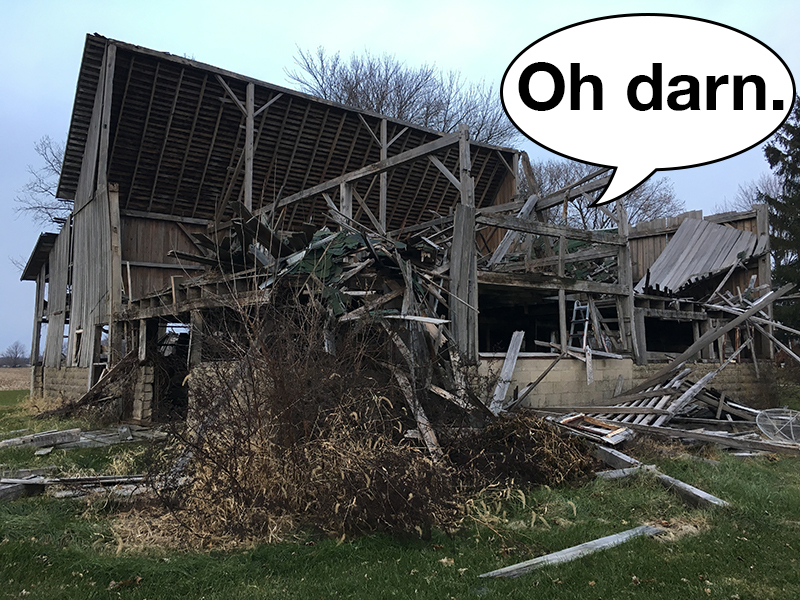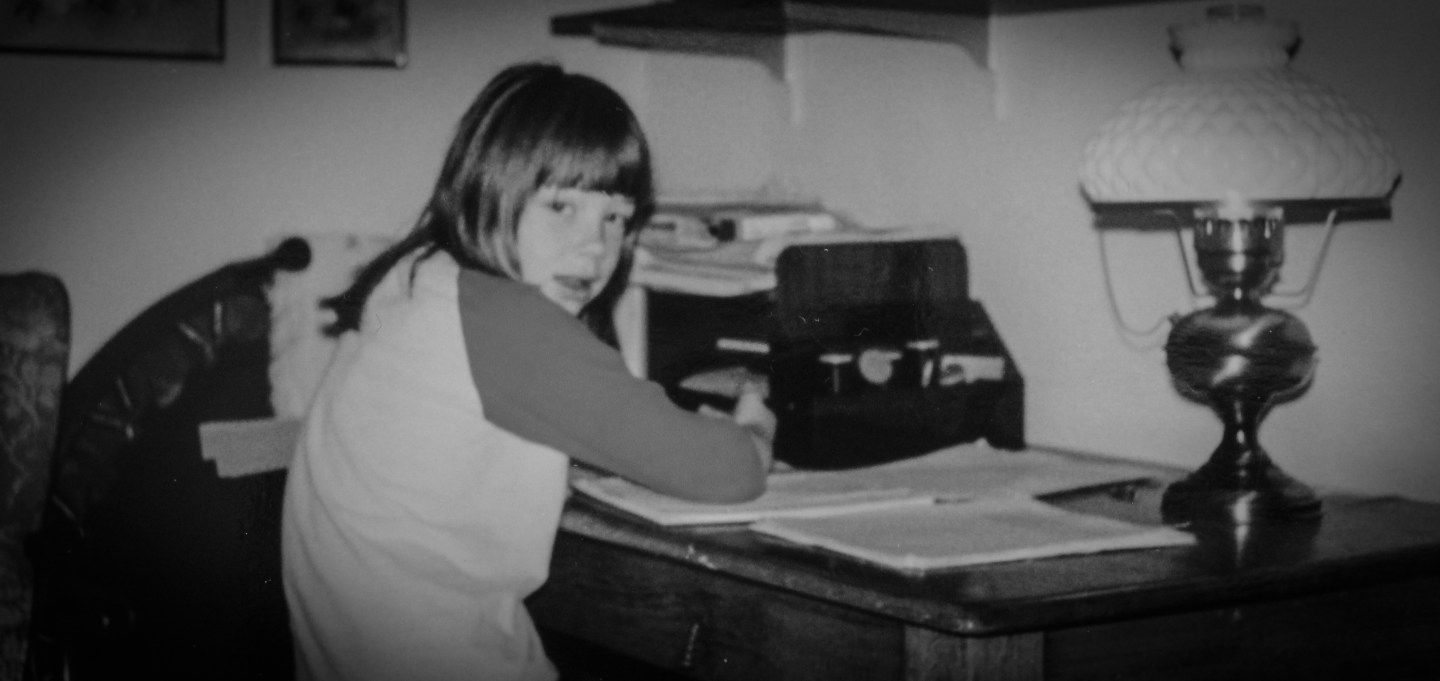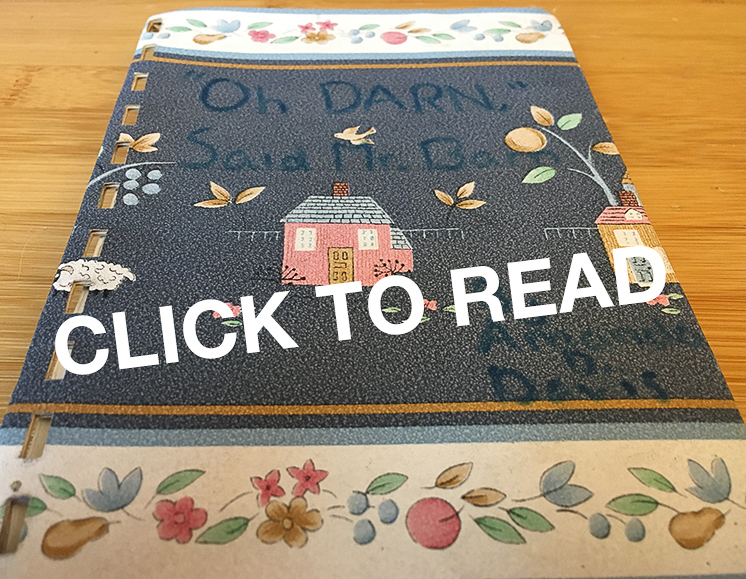When we are first learning to be writers, we often copy the stories of others—not copy copy. We don’t rewrite them word for word. Instead, we use some part of the story—how it’s put together, what happens, a character, the setting—as inspiration to create our own stories. This is exactly what I did in elementary school with a book called I can’t, said the ant (Scholastic, 1961) by Polly Cameron.
In this story, a tea pot falls off the counter and the various inhabitants of the kitchen try to help her get back up. But as a child, I didn’t care as much about the story as I did about the rhymes. Between the rhyming verses are lines of dialogue where what is being said rhymes with the thing saying it. I couldn’t read it without smiling. I still can’t.

As a kid, I loved rhymes. They were pure magic to me. So, when I read this book, I just knew I had to create my own story with these same amazing rhyme patterns. But why barns? Well, growing up, I lived in an old country farmhouse with not 1, not 2, not 3, but 4 barns!
Okay, so yes, one was technically a shed. And one was technically a chicken coop. And one was technically a milkhouse. But basically, I grew up in the country surrounded by barns.
And when I was younger, I used to make a lot of books. Not just write them. We also made them. And we sometimes made the covers out of old wallpaper samples. When I was making “Oh DARN,” Said Mr. Barn, I found this great wallpaper with sort of a barn-looking thing on it, and I thought, if I use that wallpaper as the cover I won’t actually have to spend time drawing a barn on the cover. Something else about me that you might not know is that I’m not the most patient person in the world. Ask my husband or my mom, and they’ll probably tell you I’m the least patient person they know. I like getting things done. Fast.
So, how did I ever spend eight years writing seven full drafts of Superstar including a draft that was almost 100,000 words long? When I write, a completely different drive takes over. I don’t care about finishing fast. I care about getting the story on the page to match the one in my head (and in my heart).
At least I do now.
But I didn’t care so much about that when I was ten. Which takes us back to Mr. Barn. I’m pretty sure what you’re about to read was my first draft. Or maybe it wasn’t. I don’t know. That was a really long time ago. What I do remember is loving writing this book. When I moved back into my old childhood home last year (the old country farmhouse surrounded by the barns), I was so excited to find my childhood masterpiece “Oh DARN,” Said Mr. Barn in a file folder with my old school papers.
Unlike the teapot in “I can’t” said the ant, Mr. Barn did not have a happy ending. But not all books can have happy endings. And neither can all barns.
The not 1, not 2, not 3, but 4 barns—which I once again see on a daily basis—have met a similar fate to that of Mr. Barn, not from an earthquake, but from old age. We affectionately refer to them now as the “falling-down” barns.
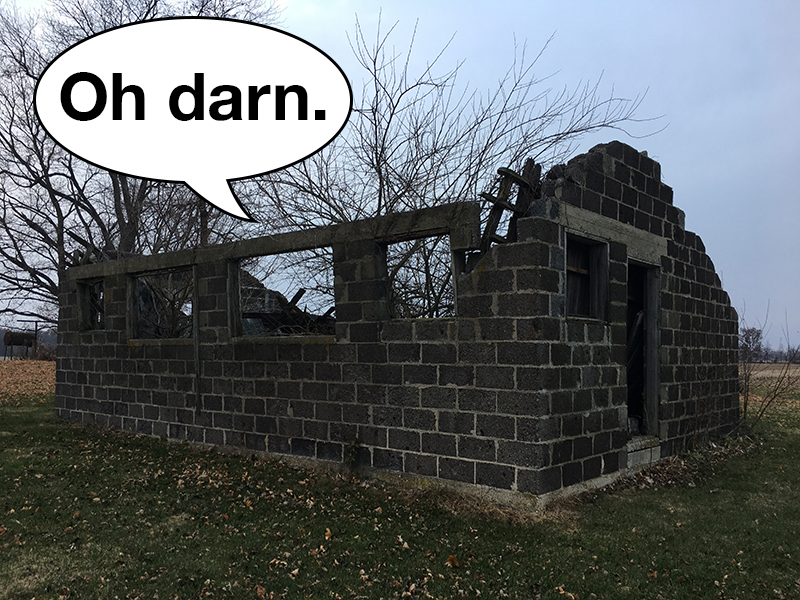

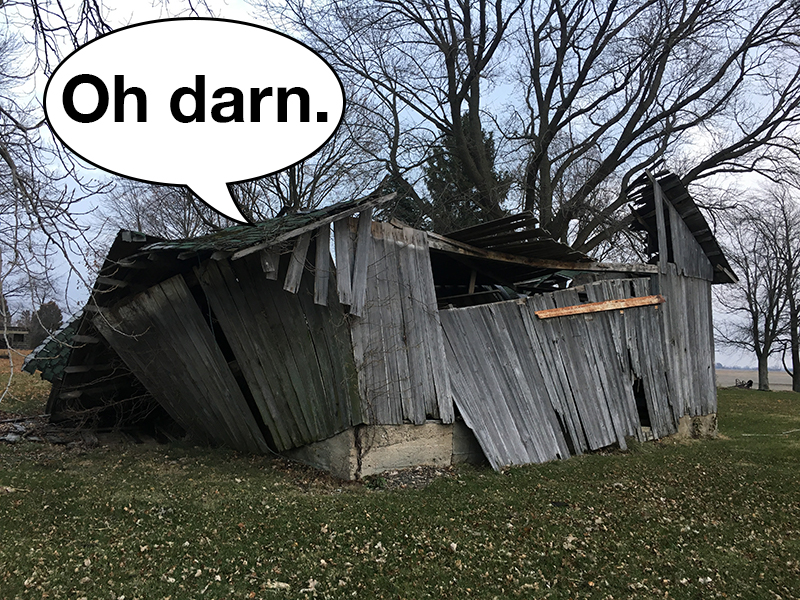
And finally…
